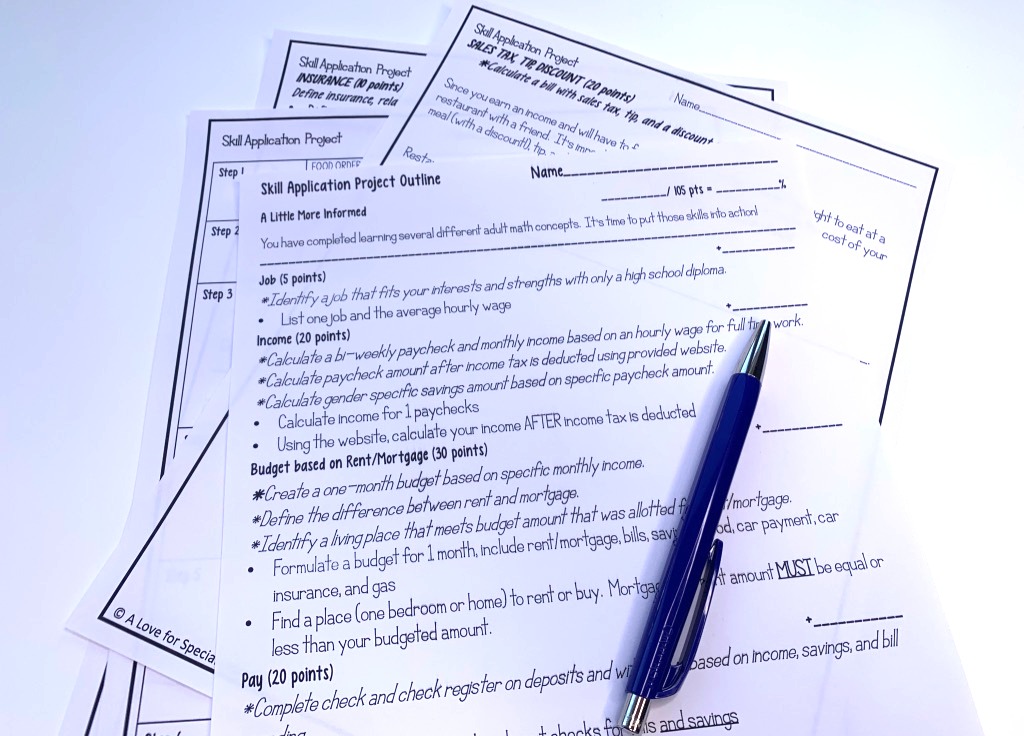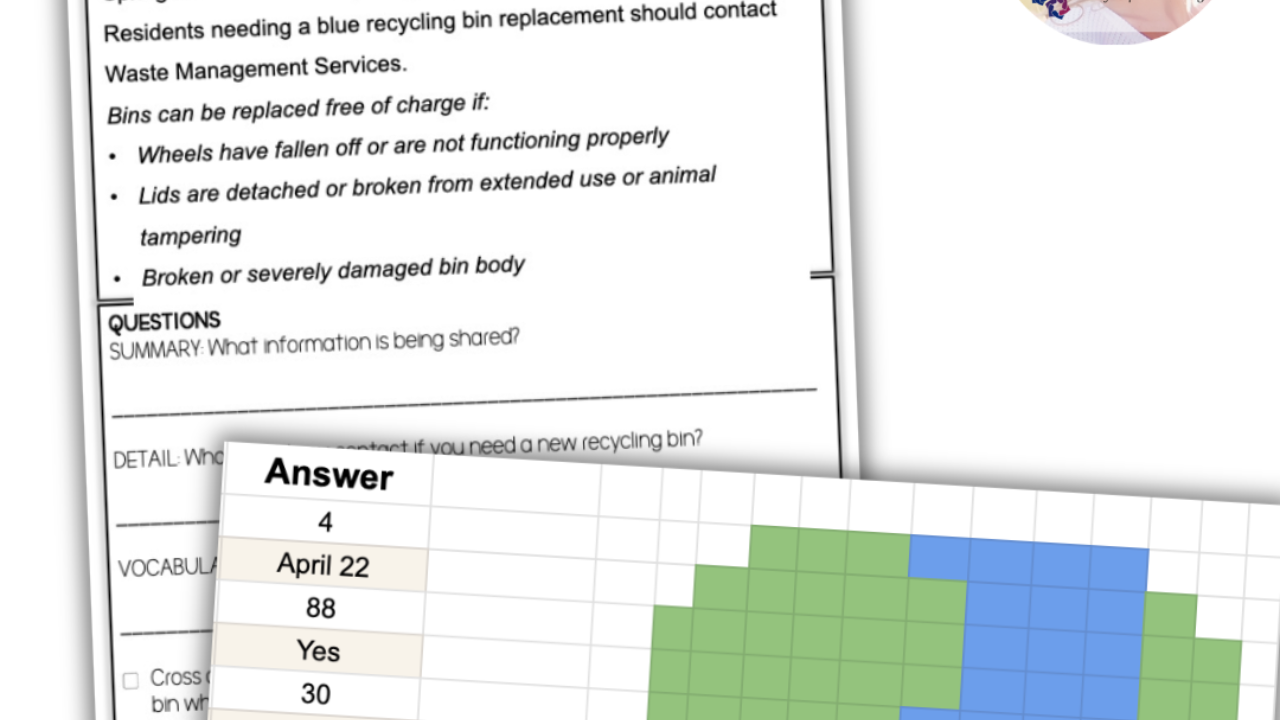Applied Learning Projects- The How and Why (and Tips)
Apr 09, 2020
When I think of applied learning projects there is a quote that comes to mind:
‘Tell me and I’ll forget, teach me and I’ll remember, involve me and I’ll learn.’ -Benjamin Franklin
To me, this quote says- ‘If I can apply the skill, then I have learned the skill.’ -Heather
Many moons ago I was given the task of teaching a new class and since I was given nothing (that’s right, absolutely nothing was given to me in terms of resources, and I’m sure this shocks no one) I developed a curriculum from the ground up.
Around the second year I taught the class I had the feeling that we were flying through concepts and that I wasn’t connecting the skills directly to the student’s ‘real life.’ I mean, I knew they would need these skills, but the student’s didn’t yet know how these ideas would apply to their future life. To solve this problem, I decided to create a project.
I wanted the project to be individualized (or differentiated) and to force the student to revisit the concepts we had covered and to apply these ideas to something that interested them.
I wanted student’s to grow on the skills they were learning, so the concepts had to overlap (which they did naturally, thanks to it being real-life stuff).
Maybe most importantly, I wanted my students, most of which were not Bachelor’s degree bound, to have a real look at the financial life of an entry level employee, as that is where they would be starting upon graduating high school.
From this idea, the Projects were born! I know, the name is very original :)
I took a look at my scope and sequence and divided it down. As any organized teacher would do, I broke the curriculum down by quarter. Project 1 covers the concepts from 1st quarter, Project 2 covers the concepts from 2nd quarter, and so on.
Here is how that breaks down by concept:
Project 1 Covers (FREE)
-
Job search
-
Calculate income
-
Create a budget (one for monthly budgeting and one for lunch budgeting)
-
Write checks and balance a check register
Project 2 Covers
-
All concepts from Project 1
-
Define insurance terms
-
Restaurant visit using sales tax, tip, and discount
-
Search for a place to rent or buy
Project 3 Covers
-
All concepts from Project 2
-
Meal plan for a week
-
Comparison shop for preferred item
-
Use a credit card
-
Search for a local bank and their services
-
Goal setting
Project 4 Covers
-
All concepts from Project 3
-
Time management
-
Plan a trip
-
Basic tax filing
-
Identify a support system outside of high school
This is how I roll out each Applied Learning Project:
-
I designate a full 5 day school week for students to work on the Project. All work is done in class!
-
The students are allowed to use every bit of notes, guided practice, independent practice, and assessment from their binder (or a friend’s binder). There is an element of social communication involved in asking a peer for their notes, especially if a student was absent and doesn’t have the information they need.
-
I’m a resource. I help them find the notes page they are looking for, I make recommendations if they are stuck, and help them to think a few steps ahead when necessary.
-
I’m an encourager. I compliment those who stay on pace. I don’t micromanage them as they work, but I do require that they go in the rubric’s order (which is necessary for most steps).
-
Have computers/tablets ready for day 1. The first step is to find a job and requires access to the internet.
Here are some tips for using the Applied Learning Projects:
-
Print 1 rubric page for every student. Set to the side.
-
Print the entire project single page, lay it out in front of you, pull the different level pages for 1 student, then copy and return pages back, write student’s name on front rubric and staple all copied pages together. Repeat until all students have a packet.
-
This makes every student’s project individualized and at their appropriate level (go ahead you awesome teacher, check that box for providing differentiated assessments!)
-
If they have completed a previous Project (they are working on Project 2 and have done Project 1), then give them their old Project (yes, I keep their old Projects). Let them steal from themselves! Yes, some things will need to be tweaked and improved, but they will save time and they will accurately apply skills they’ve already learned!
-
Grade on accuracy. Since there is a week to get the work done, there is time to make mistakes and go back and fix them. Yes, their first part time job making minimum wage might not be enough to let them buy a house (that’s real life)!
If you decided that an Applied Learning Project is the right fit for your skills application based consumer math course, then follow the links below to see additional visuals!
Looking for curriculum AND Projects? Then check out this resource!























